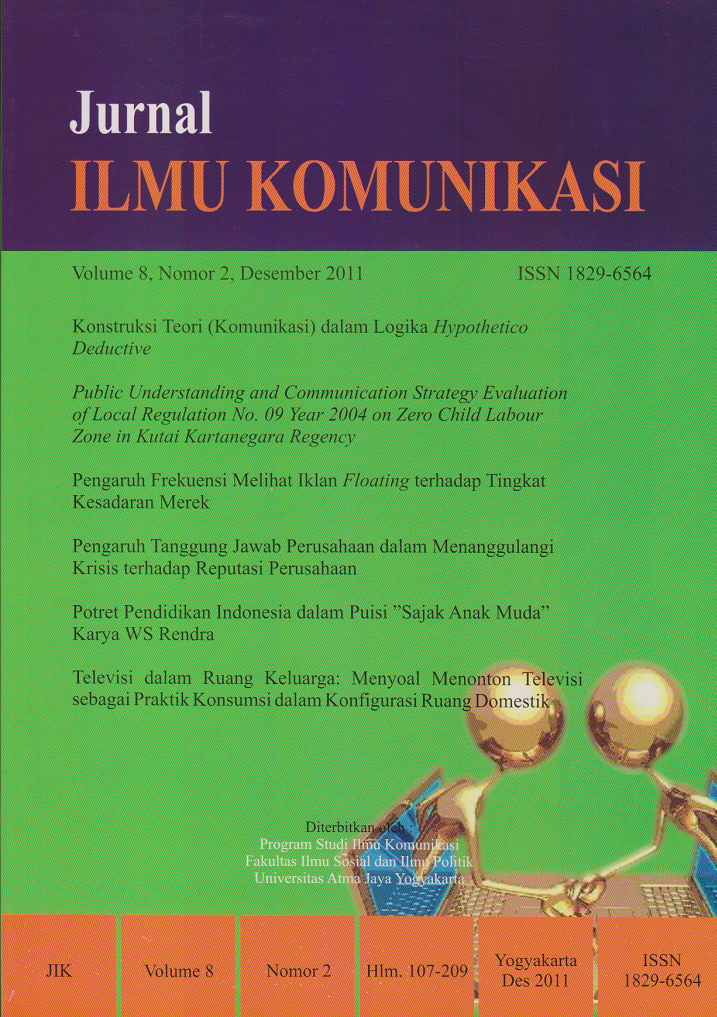Pengaruh Frekuensi Melihat Iklan Floating terhadap Tingkat Kesadaran Merek
DOI:
https://doi.org/10.24002/jik.v8i2.174Abstract
Abstract: Floating ad  is online advertisement aiming to stimulate brand awareness by increasing familiarity through reexposing advertisement. This research examines the influence of ARCO Depok members’ exposure of floating ad at www.detik.com to their brand awareness about Samsung LED TV. The frequency of consuming the advertisement is differentiated into three categories, namely three times, five times and never. The result shows that the respondents’ exposure of floating ad could influence the level of brand awareness as much as 40.7%. However, this tendency was not represented in the category of five times. The result also shows that the only control variable which was able to significantly influence the level of brand awareness was the variable of respondents’ visitation to the site of detik.com.
Abstrak: Iklan floating merupakan iklan di media internet yang bertujuan mencapai kesadaran merek dengan cara meningkatkan familiarity melalui frekuensi pengulangan iklan. Frekuensi melihat iklan floating dibedakan  dengan memilah kelompok responden yang dikenai frekuensi melihat iklan 3 kali, 5 kali dan tidak melihat iklan. Penelitian ini menguji pengaruh frekuensi melihat iklan floating di www.detik.com terhadap tingkat kesadaran merek Samsung LED TV pada warga ARCO Depok, Jawa Barat. Hasil penelitian menunjukkan bahwa frekuensi melihat iklan floating dapat mempengaruhi tingkat kesadaran merek sebesar 40,7%; namun tidak terbukti pada kelompok yang melihat iklan sebanyak lima kali. Variabel kontrol yang mampu mempengaruhi tingkat kesadaran merek secara signifikan hanya variabel kunjungan responden ke detik.com.Â
Downloads
Published
How to Cite
Issue
Section
License
Jurnal ILMU KOMUNIKASI is an academic journal. As such, it is dedicated to the open exchange of information. For this reason, JIK is freely available to individuals and institutions. Authors who publish in Jurnal ILMU KOMUNIKASI will release their articles under the Creative Commons Attribution (BY) License. This license allows anyone to copy and redistribute the article in any medium or format as well as remix, transform, and build upon the material for any purpose, even commercially as long as they credit the authors for the original creation. For details of the rights authors grants users of their work, see the "human-readable summary" of the license, with a link to the full license. (Note that "you" refers to a user, not an author, in the summary)
 This work is licensed under a Creative Commons Attribution 4.0 International License.
This work is licensed under a Creative Commons Attribution 4.0 International License.














